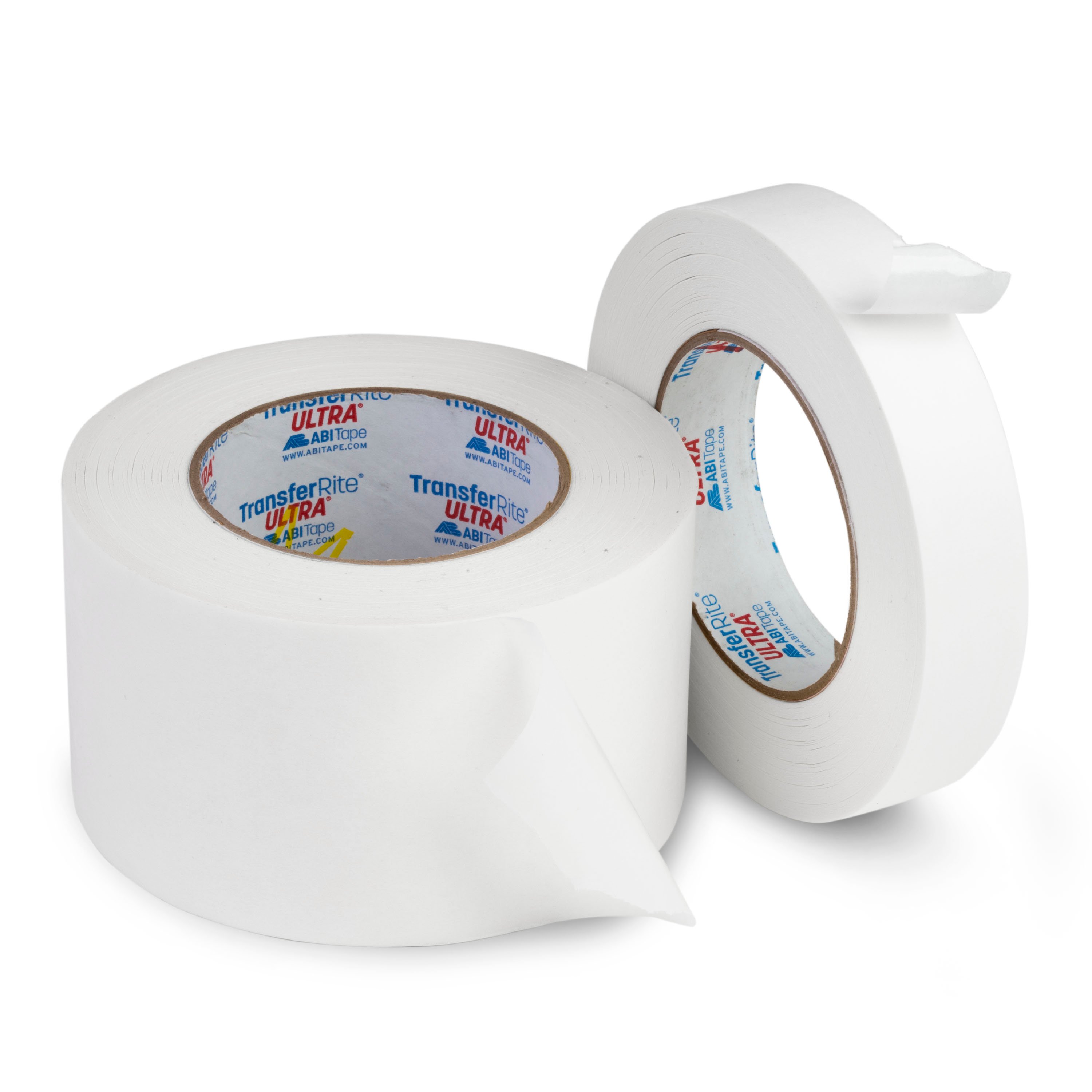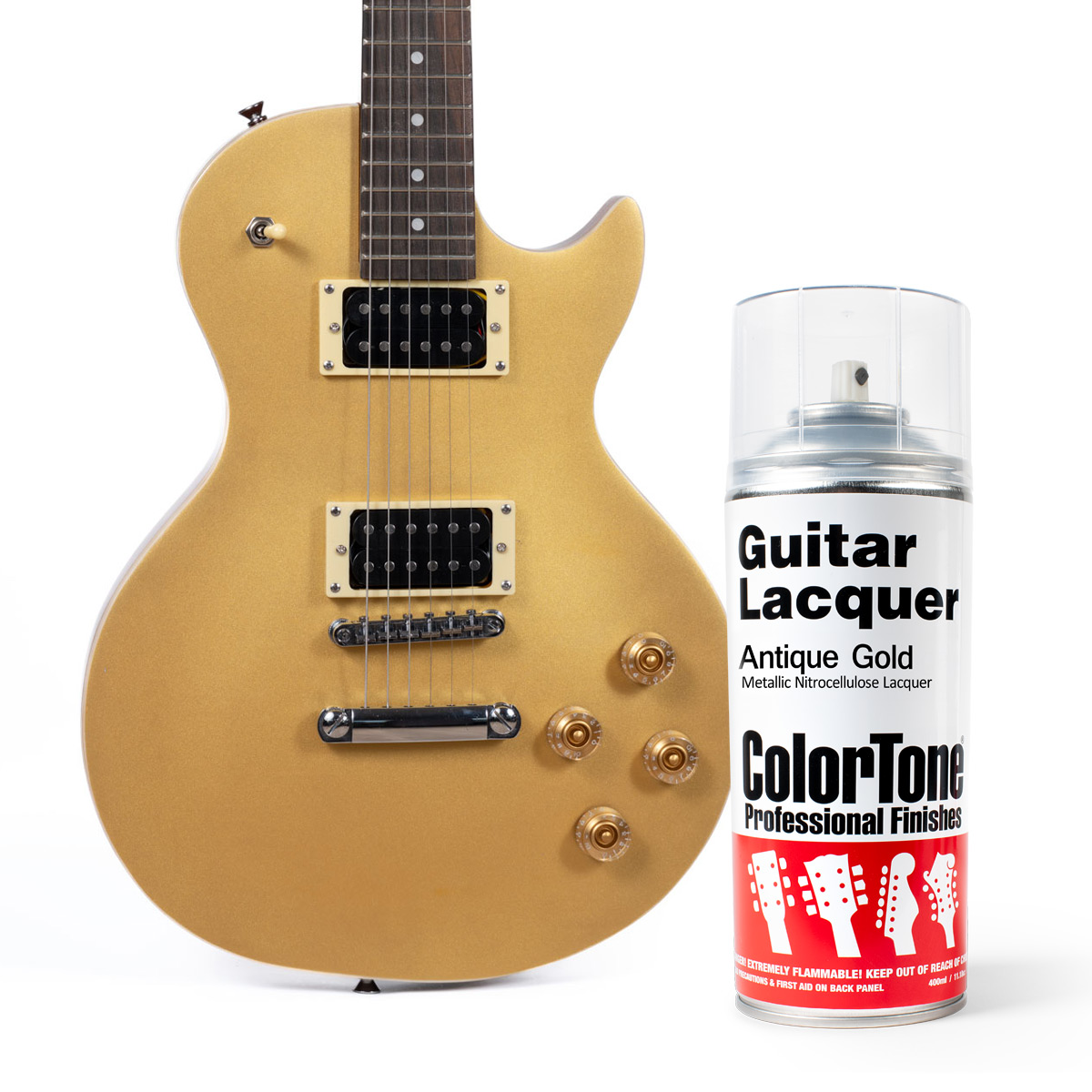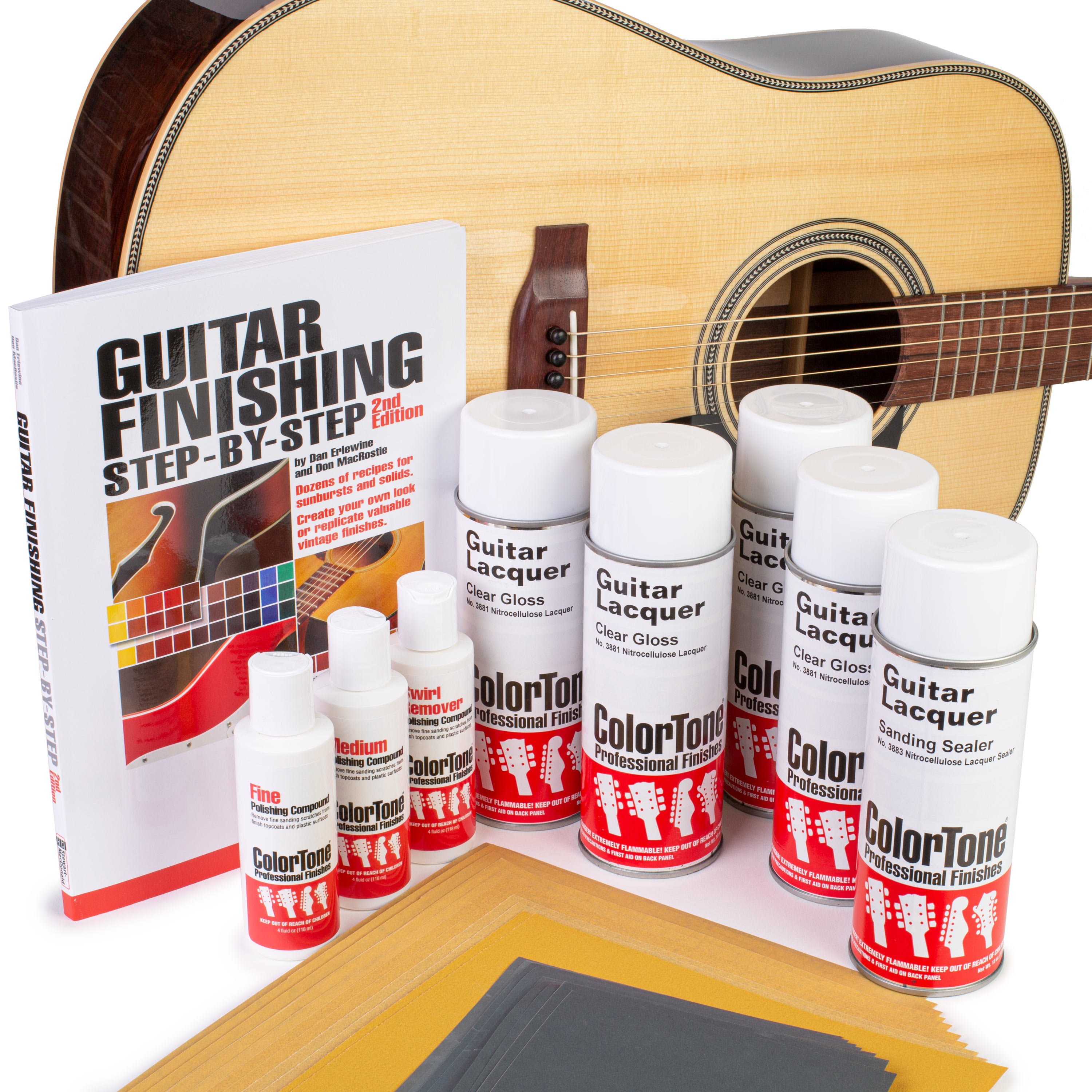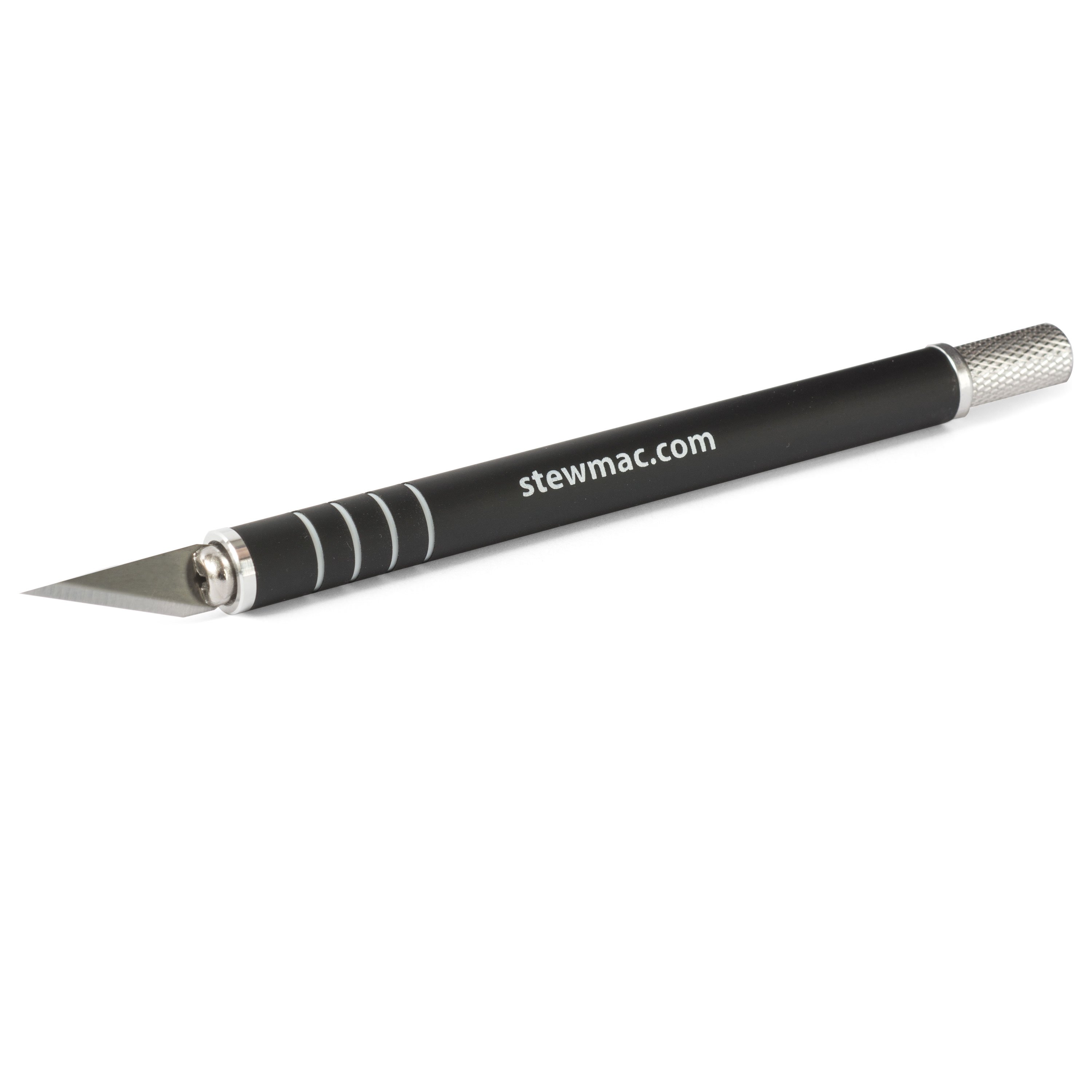Spraying a peghead logo using a vinyl frisket
Issue 305 May 17, 2018
Somebody stripped the peghead of this 1957 Gibson J-50 to bare wood. Restoring it means replicating the original logo. Dan Erlewine’s got a neat tip for spraying a factory-quality logo.
- Your local sign shop can help you with this
- No need for a knife-cut frisket
- Aerosol lacquer replicates the original screen-printed logo
Video Transcription
[on-screen text reads: StewMac tools + ideas for guitarmaking]
Restoring a peghead logo
Dan Erlewine: Today on the workbench I have a 1957 Gibson J-50. I have it because the peghead was stripped to the bare wood and the new owner wants it black again with the Gibson logo on it, and that's my job, and he wants the logo on with a decal that he found online. He sent that too, but I don't want to use that because Gibson would not have done that back in that day. They would've used gold lacquer and done it with a silk screen.
I'm going to spray it like the original with gold lacquer aerosol, and to do that I need a frisket. A frisket is like a stencil. You spray through it, take it away, and you have the image. My frisket is something that my friend Chris Hosner sent me. Killer guitar player and repairman, Chris. What he did was take a photo of a Gibson that he liked, then took it to a print shop. They scanned it into the computer to create that image and then their little machine comes in and cuts all the letters out so you can peel away your frisket. Some friskets are better than others, is what I'm told, so this, for your information, is Oramask 811 stencil film. That's what it is. That's what you want.
Now I prepped the bare wood when it came in with a 320 on a flat block, gold, sanding it dry, then cleaned it with acetonea, getting any oil off. Then I used shellac, this shellac, then lots of black, because I sanded through on the third coat and six coats of clear maybe, sanding them, and it built up beautifully. This is straight off the aerosol can and I'm not going to... I'm going to leave it because it looks factory as it shrinks back.
And now the final thing is gold lacquer. I chose the antique gold because that's just the perfect color for what I'm trying to do.
Protecting the guitar body and fretboard
I'm going to put the body in a garbage bag. When you spray metallic you want to be careful because it gets in the air, it gets on your clothes.
And a little more tape on the back. I use this, the low tack [on-screen text reads: Low Tack Protective Tape - stewmac.com], because it's gentle on an old lacquer finish.
Setting the frisket on the peghead
Cool, I'm ready to put the frisket on. He's even got the top of the little mustache on there, and that would let me line it up right with the top of the peghead. That's cool. And then there's two tuning holes on there to line that up with. I might tape that in place for a second. I come across this with a piece of tape, just to keep it square to, and then it goes right about there.
[Dan tapes down the frisket on the peghead with low tack tape]
Mm-hmm. Boy, I like the looks of that. I should have painted it white. Now I just have to tape off the rest of the peghead. Let's go outdoors. It's a beautiful day, for the professional.
Spray painting the frisket
Camera Crew: All right, let's do this.
[Dan starts spray painting the frisket on the peghead with aerosol lacquer]
Dan Erlewine: You got to follow the wind. Now it's going that way.
So we had to move our cameras indoors here. It's probably been less than 10 minutes, maybe eight. I did a little practice run last night on a other piece of lacquer and I took it off probably in a minute or so and I got some tips on how to do it.
Removing the frisket
If I see something like a line that doesn't look cut, I might just cut it a little bit, and I have my tweezers because you probably have to peel some of this off. Here goes nothing.
See, I might have left it on a little too long. It's left some residue. Whoa. Keep on going. Come on baby, let's go. Now we have to get smart. Let's see how I'm going to get this residue off. Hold on, I'm getting on there mighty quick with some naphtha [on-screen text reads: Behlen Naphtha Solvent - stewmac.com]. [Dan is rubbing the peghead with a rag with Naphtha on it] Crossing my fingers, knocking on wood.
So you might have learned a lesson on the lesson I just learned. Get it off as quick as you can, and don't be taking a video. It's coming off. Ooh, it looks good too. Go Danny, go.
Mm-hmm. Yay. Whew. Man, we lucked out. You got a double tip there. That's actually good to see a live video like that. Naphtha saved the day, and a little quick action. You got to get right to it and fix your own mistakes.
I'm going to get all this stuff off there and see how it looks. That's probably a 15-minute taping job there.
And that's it. I'm going to leave it just like this with that dry silk screen look. You could spray coats of lacquer on it and melt it all in, but frankly, this finish right off that aerosol can is flat enough that I'm done with it.





